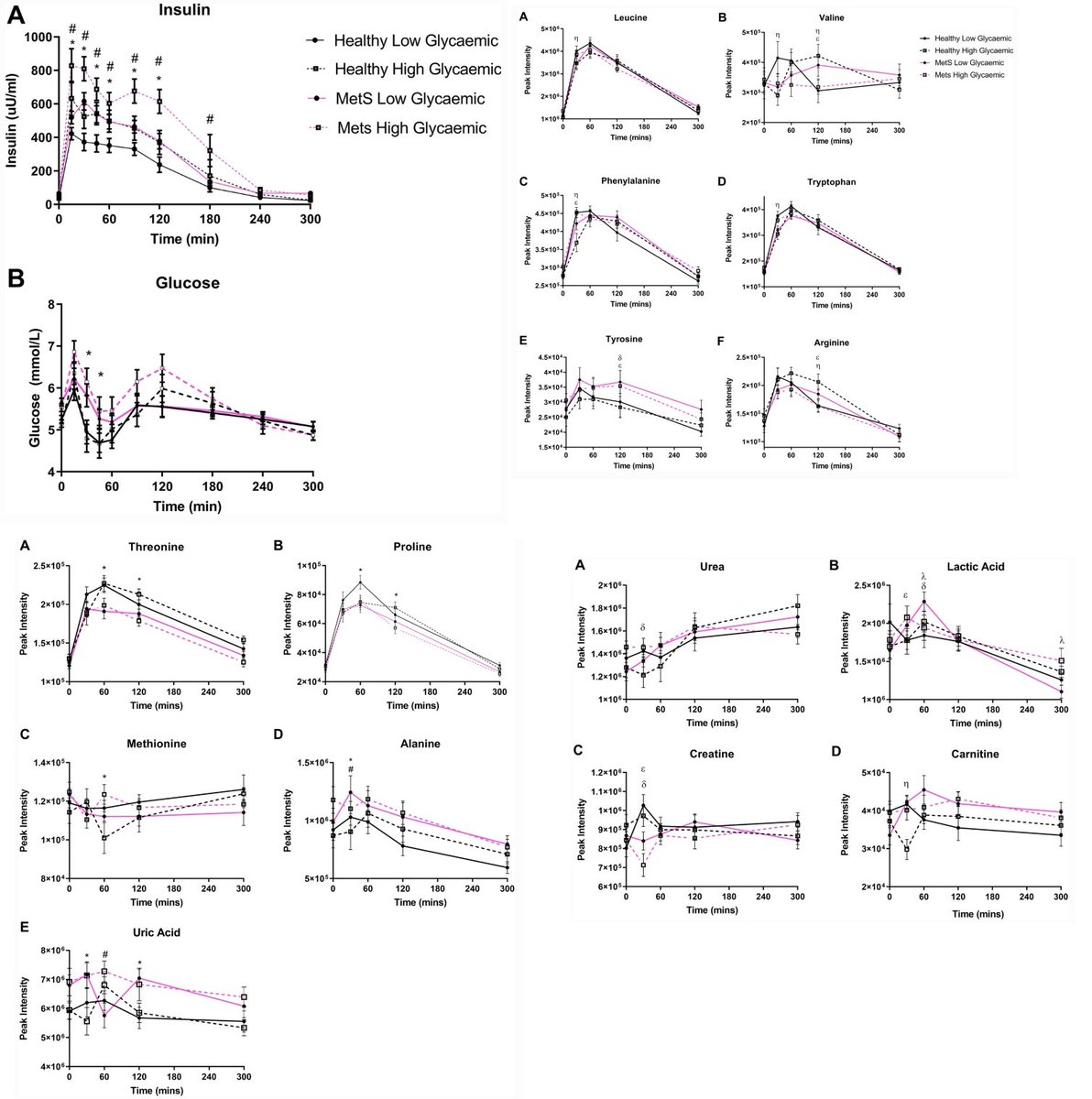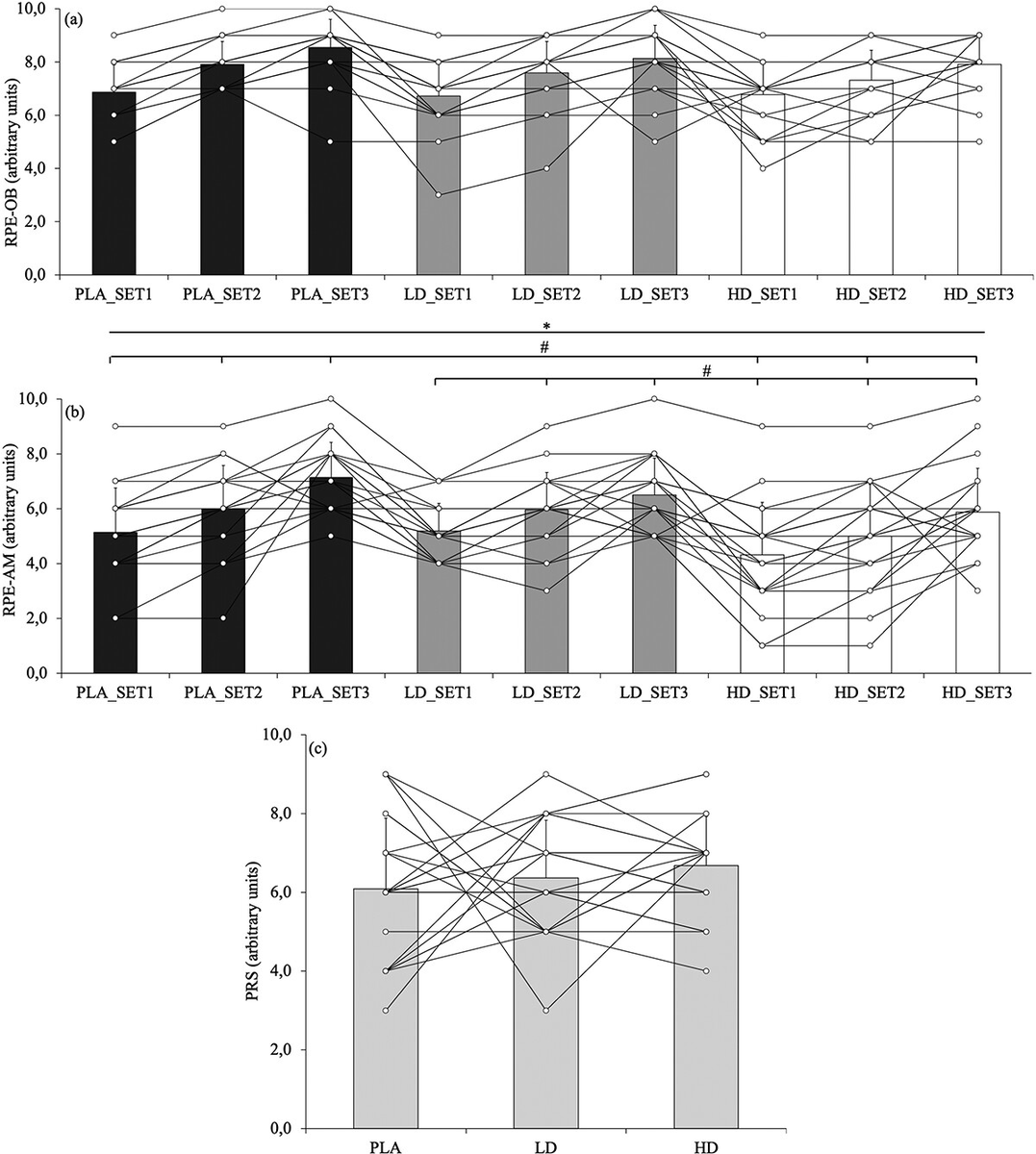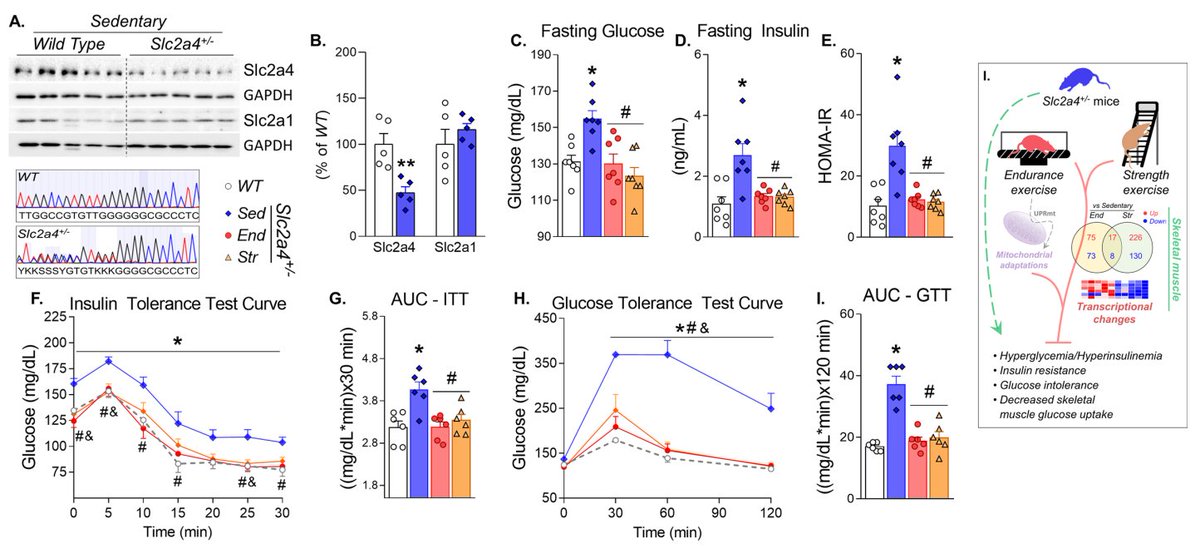The findings of this one suggest that the glycaemic load of a meal is not a major determinant of postprandial response, with a greater impact exerted by the metabolic health of the individual. 

- The aim of this study was to perform an acute cross-over intervention to examine the interactive actions of meal glycaemic load on the dynamic responses of the plasma metabolome in overweight females.
- Postmenopausal women with a mean age of 63 yeras ingested two differing high-carbohydrate test meals (73 g carbohydrate; 51% energy) composed of either low glycemic index or high glycemic index foods in a randomised sequence.
- They were allocated into two groups: Metabolic Syndrome, assigned according to the IDF guidelines, and those who did not have established risk factors & their body mass index (BMI) was in the healthy range (18 to 25 kg/m2).
- Using an untargeted liquid chromatography–mass spectrometry strategy, the results showed a predominance of differences in circulating aminoacids between the women who were healthy and those with metabolic syndrome.
- There were far fewer and more subtle differences in the circulating aminoacid response between the high and the low glycemic index meals.
- Of the responses evident, these tended to be within the first hour following the meal, with no effect evident over the subsequent 2 hours of analysis.
- The untargeted metabolomic analysis also identified metabolites related to energy utilisation pathways, including lactate and carnitine that exhibited a greater post-meal excursion in the women with metabolic syndrome.
Plasma metabolomic response to high-carbohydrate meals of differing glycaemic load in overweight women (open access)
doi.org/10.1007/s00394…
#MetabolicSyndrome #Obesity #Cholesterol #Triglycerides #InsulinResistance #Hypertension #Diabetes #nutrition #diet
doi.org/10.1007/s00394…
#MetabolicSyndrome #Obesity #Cholesterol #Triglycerides #InsulinResistance #Hypertension #Diabetes #nutrition #diet
• • •
Missing some Tweet in this thread? You can try to
force a refresh

 Read on Twitter
Read on Twitter








